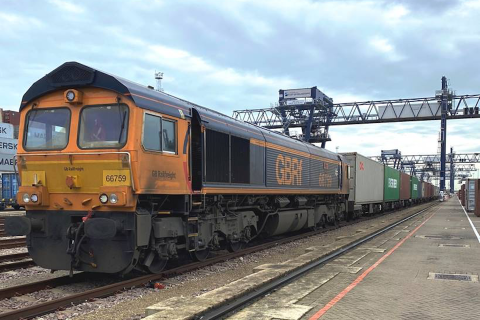Railway plans for Antwerp and Zeebrugge still on the agenda

Two important ports for rail freight transport will merge into one; Antwerp and Zeebrugge. Together, they are likely to overtake Rotterdam as the largest container port in Europe. Where Antwerp specialises in containers, break bulk and chemical products, Zeebrugge is a major port for RoRo traffic, and a gateway for many cars on the way to Europe. What does this merger mean for rail transport to these Belgian harbours?
In order to maximise the added value of a unified port, Port of Antwerp-Bruges will seek to develop and make optimum use of the interconnectivity between the two ports, the port of Antwerp said. “The transportation of goods by rail between the two sites will be bundled, estuary traffic will be optimised and pipeline connections will also be on the list of priorities.”
What does it mean?
What this looks like in practice, is not yet clear. The two ports lie at a rough 80 kilometres distance away from each other. Both ports have their specific railway connections with the European hinterland, and with Far East Asia. There are no concrete plans for new railway connections between the ports, said a spokesperson of infrastructure manager Infrabel.
However, there are ongoing projects to improve the railway network of both premises, and these projects will continue, according to Infrabel. On 31 March 2021 it presents its vision for rail transportation for the port of Antwerp-Bruges, after a year of cooperative negotiations with what was then still the port of Antwerp alone.
Rail at Antwerp
The port of Antwerp currently has a relatively low share of rail transport: nearly 7 per cent, translating to about 130 freight trains per day on the 1,000 kilometre railway lines in the area. It wants to increase this share to 15 per cent by 2030. In order to achieve this, it has a plan in place. This plan was formed by Railport (which includes the port authorities) in cooperation with the inframananger, after the latter had been criticised for the poor performance of rail freight at the port.
“In 2020, we have held several workshops and formed concrete measures to be taken to improve the situation in Antwerp. It includes plans for the middle to long term, and focuses on the areas that are economically most viable. The merger with Zeebrugge does not change these plans. However, they are subject to availability of funds. Projects require investments, and at this point it is not entirely clear how these plans will be funded”, said the Infrabel spokesperson.
Rail at Zeebrugge
Zeebrugge is doing better as a rail destination. It currently has a 15 per cent share of rail transportation, and all terminals in the port have their own rail infrastructure, allowing them to provide intermodal services. It recently received an upgrade. End of last year, Infrabel invested 11 million euros in the expansion and modernisation of the rail connection to the port of Zeebrugge.
“What we have planned for Antwerp, could also work for Antwerp-Bruges”, said Infrabel. When we formed these plans for Antwerp, we did not yet have the merger on our radar. However, the plans should be considered as a proof of concept. If it works out, it could be applied to other ports as well.”
Double the volumes
In general, the Belgian rail freight industry has committed to a doubling of the rail freight volumes by 2030. Infrabel has received a government fund of 75 million euro to help accomplish this. “Part of this money will be invested in Antwerp and Zeebrugge, and some of this will already be spent this year”, said Infrabel’s spokesperson.
You just read one of our premium articles free of charge
Want full access? Take advantage of our exclusive offer





